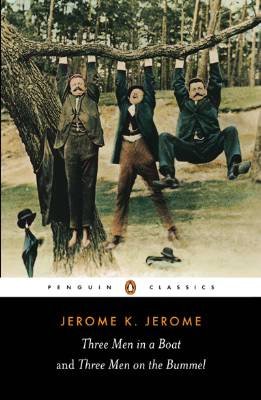First published 1998 by Westview Press
Published 2018 by Routledge
711 Third Avenue, New York, NY 10017 USA
2 Park Square, Milton Park, Abingdon, Oxon OX14 4RN
Routledge is an imprint of the Taylor & Francis Group, an informa business
Copyright 1994, 1998 Taylor & Francis
All rights reserved. No part of this book may be reprinted or reproduced or utilised in any form or by any electronic, mechanical, or other means, now known or hereafter invented, including photocopying and recording, or in any information storage or retrieval system, without permission in writing from the publishers.
Notice:
Product or corporate names may be trademarks or registered trademarks, and are used only for identification and explanation without intent to infringe.
Library of Congress Cataloging-in-Publication Data
Kagan, Jerome.
Galens prophecy : temperament in human nature / by Jerome Kagan with the
collaboration of Nancy Snidman, Doreen Arcus, J. Steven Reznick.
p. cm.
Includes bibliographical references and index.
ISBN 0-8133-3355-5 (pbk.)
1. Temperament in children. 2. Inhibition in children. 3. Temperament in childrenPhysiological aspects. 4. Inhibition in childrenPhysiological aspects.
5. Environment and children. 6. Nature and nurture. I. Title.
BF723.T53K34 1998
155.26dc20 93-42664
CIP
Designed by Barbara DuPree Knowles.
ISBN 13: 978-8133-3355-7 (pbk)
I t has proved profitable in young, emerging sciences to base inquiry on reliable facts rather than on historically popular abstract ideas. The trusted reality that served as the origin of the research to be summarized is the mundane observation that some people are excessively restrained when they meet a stranger, wary when they confront an unexpected event, or cautious when they must act with a risk of possible failure. Fiction is full of examples that contrast this personality with its complementthe sociable, fearless, bold agent who is unaffected by these everyday events. Walter Matthau and Jack Lemmon in The Odd Couple are a well-known movie example.
These two categories of people are represented, albeit by different words, in every current theory of personality, as well as in the essays of ancient Greek philosophers and physicians who believed they understood the basic forms that human character assumed. The melancholic and sanguine types described first by Hippocrates and later by Galen became the introvert and extrovert in Carl Jungs vocabulary. These distinctive styles are present in similar, and remarkably undisguised, form in school-age children. The quiet, shy, tense child who sits in back of the classroom usually migrates to the edge of the playground to watch, sometimes with envy, the sociable, seemingly confident peer who easily organizes classmates for a game.
Although folk theory is often at odds with evidence from psychological research, in this case the community belief that these two traits emerge early and are stable over time matches the scientific record. These psychological qualities are among the best preserved aspects of human nature. Assured of a robust fact that would not vanish tomorrow or be shown to be an artifact in next months journals, one naturally asks why. Now gentle consensus is replaced with strident controversy. Although few would quarrel with the truism that a persons biology and experience unite in an enigmatic but, surely, seamless way to produce each of these two profiles, it is meaningful to wonder about both the nature and the magnitude of the biological contribution. Of course, the magnitude can never be a fixed quantity and will vary with historical, contextual, and personal conditions. Nonetheless, it is useful to determine whether the influence of a persons distinctive biology is minimal, modest, or major with respect to a specific quality. The contribution of a childs biology to the frequency of bruised knees is tiny compared with its influence on juvenile obesity or, to pick a more extreme example, the intellectual profile of a child with Downs syndrome.
Opinion regarding the force of temperament in the creation of introverts and extroverts has cycled ever since a physician named Galen of Pergamon suggested, seventeen hundred years ago, that inherited constitution, in concert with diet and climate, constitutes the basis for melancholic and sanguine individualshence the title, Galens Prophecy. The first chapter describes the change in Western thought from the explicit acknowledgment of the influence of biology by the ancients, which lasted until the end of the nineteenth century, to a rejection of hereditary forces, during the first half of this century, and a maximization of the shaping hand of social experience.
When I was a graduate student in the early 1950s, few questioned the assumption, which had become dogma, that biology was superfluous in explanations of human variation in skill, motivation, habit, and mood. The most important reason for this unquestioned faith was the political necessity of maintaining that the many thousands of European immigrants who began to settle in America soon after the Civil War, and in increasing numbers after 1900, possessed the same natural ability and humaneness as those born to the immigrants who had arrived in the seventeenth century. The premise that the proper arrangement of experience, in family, school, and neighborhood, can make everyone roughly equal in competence, contentment, and civility was held, along with the beatitude of personal liberty, with such conviction that few stopped to brood about its truth value, lest they lose the rational foundation of each days plans and the passion needed to support liberal legislation. This ethical imperative was sustained by the broad dissemination of Pavlovs discovery of animal conditioning in a St. Petersburg laboratory. If a dog can learn to salivate to the sound of a metronome, surely the average child could be taught anything.
It would take more than fifty years before a number of psychologists would challenge that progressive idea. As the new cohort of scientists was discovering some of the limitations in Pavlovs grand dream, events in the society as well as in the academy were undermining the attractiveness of the assumption that experience can build or repair any psychic component in any sane person. The ethology movement, associated in most minds with Konrad Lorenz and Nikolaus Tinbergen, reminded twentieth-century investigators that each animal species inherits a preparedness to learn and execute particular behaviors that serve adaptation. It is difficult to prevent a newly hatched duckling from following its mother or to teach a rat to approach a brightly lit, noisy object moving up and down at an erratic speed. Today, neuroscientists are unraveling the brain circuits that mediate the ducks approach and the rats avoidance.













